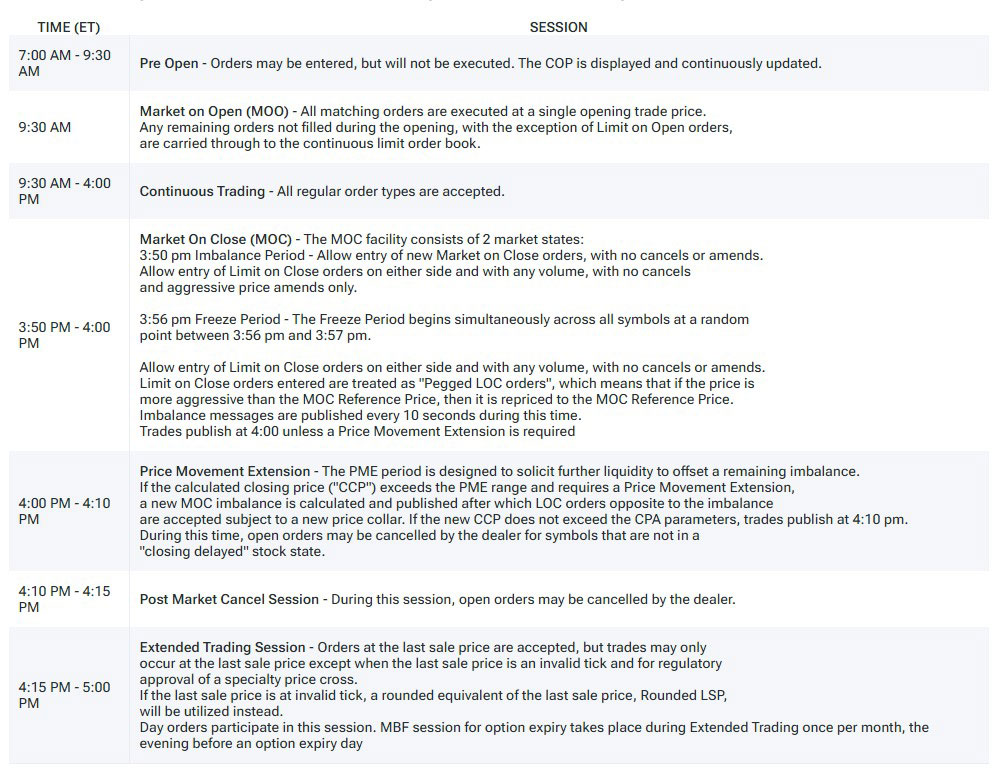What is TSX (Toronto Stock Exchange)
Features of the Toronto Stock Exchange
The Toronto Stock Exchange is often described as the "quiet" of the richest major stock exchanges in the world, with rare computer crashes, hacker attacks, "insider scandals" or high-profile "investigative journalism" and
exposés of major hedge funds and banks. A major difference between the Toronto Stock Exchange and the NYSE and NASDAQ is a significantly smaller share of "stock speculators" in relation to institutional investors, which is why
there is less volatility in the stock market and stock indices, with a more logical bull market.
Also, the Toronto Stock Exchange (TSX) is considered one of the most conservative and ultra-reliable in the world. There are even jokes around Canadian conservatism as if they were less impulsive, “thinking for a long time” than
US citizens, they say, they are used to reacting to everything “in a slow” and measured way in “cold Canada”.
Interestingly, the Toronto Stock Exchange offered computer access to its trading as early as 1977, well before the New York Stock Exchange.
An interesting fact is that the name of the exchange looks like this - TSX, and abbreviation is opened as Toronto Stock Exchange. The fact is that the abbreviation TSE was already occupied by the Tokyo Stock Exchange (Tokyo
Stock Exchange). To avoid confusion, we decided to replace the first letter in the word Exchange with the second.
The main participants of the Toronto Stock Exchange are:
- Issuers of shares traded on the TSX;
- Market makers responsible for ensuring full liquidity of any order from the broker;
- Brokers who receive buy/sell orders from exchange traders; Traders, who are representing hedge funds,
- Investment banks,
- Investment funds,
- etc.
The operator of the Toronto Stock Exchange - TMX Group - is a large investment company founded in 2010. (assets: $10.16 billion for 2014, 1.4 thousand employees).
The largest and the most famous companies whose shares are traded on the Toronto Stock Exchange are.
- Bank of Montreal (capitalization $103.7 billion, March 2019);
- Canadian National Railway Company ($116.88 billion).
- Royal Bank of Canada ($103.54 billion) - the largest Canadian bank, with a capital of 63.944 billion Canadian dollars (2015);
- Bank of Nova Scotia ($73.9 billion). Third largest bank in Canada by deposits and net worth of $49.085 billion (2015);
- Metro supermarket chain ($48.39);
- BlackBerry Limited ($12.6 billion). Telecommunications company, manufacturer of smartphones of the same brand. Revenue $1.3 billion (2017);
-
Magna International ($65.28) is one of the largest manufacturers of auto parts for the assembly of Mercedes-Benz, Volkswagen, General Motors, Porsche, Toyota, Ford, Honda, Mitsubishi, Hyundai, headquartered in Aurora
(Canada);
- Canadian Imperial Commercial Bank ($53.7 billion);
- Agnico Eagle Mines Limited ($13.7 billion). Engaged in gold mining. Revenue $2.8 billion (2016);
- Bombardier Inc. ($28.6 billion). The world's fourth largest aircraft manufacturer after Boeing, Airbus and Embraer., as well as trains and trams.
If you are interested in investing and trading Canadian stocks but don’t know how, we are inviting you to read in more detail “how to trade stocks in Canada” article.



